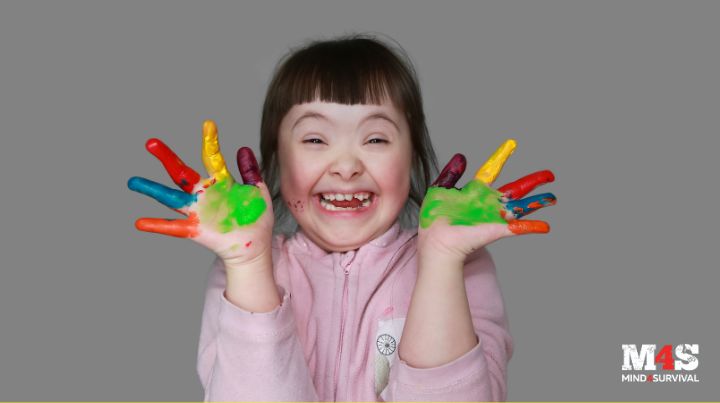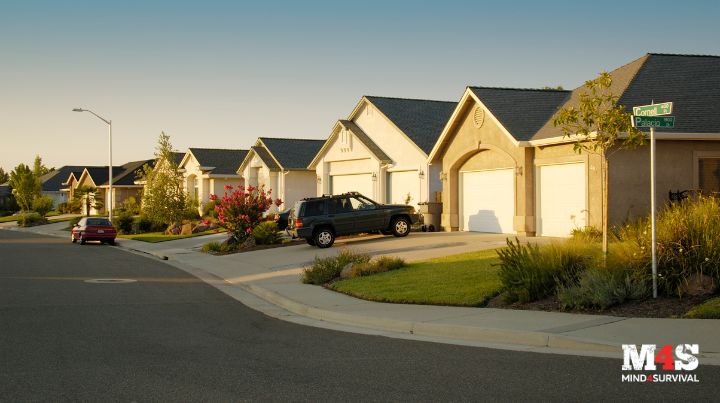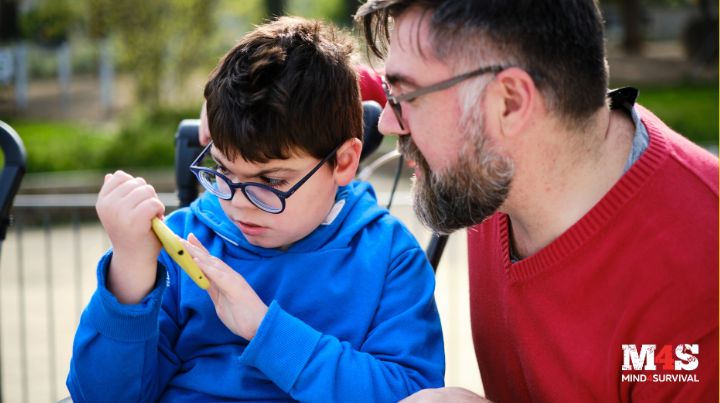Planning for Special Needs in Preparedness: A Helpful Guide


Podcast: Play in new window | Download
When planning for special needs in preparedness, it's vital to consider the unique needs of individuals with special needs. This group includes people with physical and mental disabilities, young children, and elderly individuals. Proper planning can make a significant difference in ensuring everyone's safety and well-being during a crisis.
Understanding the Needs
Understanding people's specific needs helps you tailor your plans and actions to address the unique challenges you may face. Customizing detailed plans for your specific situation helps ensure everyone's safety and well-being during a crisis.
Physical Disabilities
Mobility Issues
People who use wheelchairs or have mobility problems may need assistance with evacuation. For instance, you should ensure that there are ramps in place and all of the routes into and out of your home are clear of any obstacles. Consider practicing evacuation your procedures with the person to identify potential challenges and make the necessary adjustments to accommodate their needs. When it comes to mobility issues, you should also, plan for people who may suffer injuries during a disaster. How are you going to move someone who may have a broken leg or other physically limiting injury?
Sensory Impairments
Individuals who are blind or deaf require tailored communication methods and specific tools. For those who are visually impaired, prepare tactile maps of the home and emergency routes. Help them rehearse the route so they're better prepared to manage it on their own during an emergency. You should also provide emergency notifications and plans in braille or audio formats. For individuals who are deaf, ensure there are plenty of visual alarms and to have written instructions readily available.
Mental Disabilities
Cognitive Challenges
Those with developmental disabilities may need clear, simple instructions and familiar routines. Create visual schedules and step-by-step guides for emergency procedures. Use social stories to help explain what to do during different emergencies. Practice these routines regularly in a fun way to build familiarity.
Emotional Support
Emergencies can exacerbate anxiety and other mental health issues, necessitating strategies for comfort and calm. Put together a calming kit with favorite toys, noise-canceling headphones, calming essential oils, and other stress-relief tools. Establish a space in the home where a person can feel safe, secure, and unwind.
Children
Physical Development
Young children may need help with basic tasks and extra supplies like diapers and formula. Consider packing an emergency kit specifically for children, including baby food, diapers, a favorite blanket, and comforting toys. Teach them simple emergency procedures through games and role-playing.
Emotional Needs
Children require reassurance and simple explanations to help them feel safe. Use age-appropriate language to explain emergencies and what actions to take. Please encourage them to express their feelings and provide consistent emotional support.
Remember, children and others can pick up on the emotional energy others give off. Therefore, remind yourself and others to do their best to stay calm, rational, and not overly worried. Have people who may be struggling with their emotions separate from the group and work to calm down so they don't scare the children.
Elderly
Physical and Congitive Decline
In alignment with our earlier discussion in “Mobility Issues,” many of us struggle physically as we age. Eventually, many have mobility issues or medical conditions that limit our ability to move about easily.
-
-
- Create a plan that accounts for people with a banged-up knee (or other body part) who might be able to move independently but will do it slower than others.
- Do you have all the supplies you need to help a family member overcome their challenges?
- Create a list of their medications, medical conditions, and emergency contacts.
- Consider arranging a medical alert system with others you trust who you will help if needed. Likewise, you do the same for them.
-
When it comes to cognitive decline, memory problems and slower processing can impact their ability to respond to emergencies. Use visual reminders and simple written instructions. Keep emergency contacts and essential information in an easily accessible place.
Communication Plan
Accessible Information: Ensure all your emergency information is available in a format that individuals with sensory impairments can understand. This includes braille, large print, and audio formats. For those with hearing impairments, use visual alerts and written instructions.
Clear Instructions: Use simple language and visual aids to convey emergency procedures to those with cognitive difficulties. Develop step-by-step guides for your emergency response plan with pictures and practice these procedures regularly in a fun, non-threatening way.
Medical Needs
Medication Management: Keep a detailed list of medications, dosages, and schedules. Ensure an ample supply and necessary medical equipment, such as oxygen tanks, are available. Store these items in a dedicated emergency kit that is easily accessible.
Health Records: Maintain up-to-date health records and emergency contacts for quick access. Create a digital backup of these records and securely store them for future use.
Mobility Assistance
Evacuation Routes: Plan accessible evacuation routes and designate individuals to assist those with mobility issues. Practice these routes regularly and ensure you have as much of the necessary equipment as possible ready or where you can easily get it. Maybe you have a family member that needs a wheelchair and walker? How are you going to meet that need?
Transportation: What are you driving? Do you have reliable transportation that can accommodate your special needs, such as wheelchairs or other mobility aids? Are there places you can rent one for a few days until the situation settles down??
Support Systems
Buddy System: Pair individuals with special needs with a buddy who can help during emergencies. Ensure that the buddy is familiar with the specific needs and emergency plans of the individual they are paired with.
Community Resources: Identify local resources and organizations that can provide additional support and services. Include these resources and their contact information in your emergency kit.
Preparing the Home

Preparing your home is crucial because it ensures that all necessary supplies and safe rooms are readily available and accessible during an emergency. Stocking up on basic and specialized supplies tailored to individual needs, such as medications and comfort items, helps maintain health and well-being. Creating designated safe areas and securing your home minimizes risks and provides a secure refuge for individuals with mobility or sensory impairments.
Emergency Supplies
Basic Necessities: Stock up on food, water, and medical supplies. Ensure there is enough for at least seven days. When selecting food items, consider dietary restrictions and allergies.
Specialized Supplies: Include items specific to individuals' needs, such as hearing aid batteries, incontinence products, and comfort items like blankets or favorite toys. Be sure to store your supplies in a safe, dry, and easily accessible location.
Safe Rooms
Designated Areas
Create safe areas within the home that are easily accessible, secure, and equipped with necessary supplies. These areas should be hazard-free and easily accessible for individuals with mobility issues.
Safe Environment
To prevent injuries, ensure that heavy furniture is secured and potential hazards are minimized. Install grab bars in bathrooms and hallways to assist those with mobility issues.
Training and Practice
Training is crucial as it equips individuals with the skills to handle emergencies effectively, particularly those with special needs. Conducting emergency drills helps familiarize everyone with the plan, enabling a swift and coordinated response during actual incidents while identifying and addressing any potential gaps in the preparedness strategy.
Education
First Aid Training: Learn basic first aid, Stop the Bleed, and CPR, focusing on techniques for helping individuals with special needs. Consider taking specialized courses that address the needs of different populations, such as infants or elderly individuals.
Emergency Drills: Conduct regular drills to familiarize everyone with the emergency plan and identify any areas for improvement. Practice different scenarios, such as fire evacuations or severe weather events, to ensure preparedness for various situations. This will make people less shocked when the time comes because they've thought through the problem before.
Building Confidence
Skill Development: Teach individuals with special needs how to use emergency equipment and perform basic survival tasks. Provide hands-on training and practice these skills regularly to build confidence and proficiency.
Emotional Preparedness: Foster resilience by discussing potential emergencies calmly and supportively and practicing coping strategies. Create a plan for providing emotional support during and after an emergency. Remember, you don't always need someone to grasp it today. By getting them to learn in less stressful, smaller chunks, people can achieve the same goal, albeit more slowly, but in the end, with greater confidence.
Support Network

Building strong connections with other preparedness-minded, values-aligned people ensures a robust emergency support system. Collaborating on emergency plans and thoughts enhances the overall safety and preparedness of all involved. Additionally, engaging with local emergency services and keeping in tune with developments in the local area keeps everyone informed and ready to respond effectively.
Neighborhood Networks
Collaborate with other values-aligned people to support each other during emergencies. Establish a neighborhood watch or emergency response team that includes people aware of any special needs and can help with individuals with special needs.
Public Services
Emergency Services: Consider registering with local emergency services to ensure they know of any special needs in your household. Provide detailed information about any special needs.
Community Programs: Participate in community programs and training sessions to stay informed and prepared. Take advantage of resources, support, and information from local organizations and government agencies.
Detailed Steps for Implementing Your Plan
1. Assess Individual Needs
Conduct a thorough assessment of each person in your household's specific needs. Consider daily routines, medical requirements, and potential challenges that could happen during emergencies. To do that, consider any regular challenges someone faces, then imagine that challenge being the case during an emergency.
2. Develop a Personalized Plan
Create a customized emergency plan for each individual, outlining their specific needs and the steps required to address them. Ensure the plan includes detailed instructions for caregivers and emergency contacts. When creating your instructions, write them so a child can understand them. That way, you'll be sure just about everyone will understand them. Be sure to include alternate plans in case the primary plan doesn't work out.
3. Gather Essential Supplies
Compile a list of essential supplies tailored to each person's needs. This list should include medications, medical equipment, and comfort items. If the items on the list still need to be added to your emergency kit, work to add them. Regularly check and update your supplies to ensure everything is in working order and not expired.
4. Create Tailored Emergency Kits
Assemble emergency kits that are easy to access and carry—such as backpacks. These kits should include all the necessary supplies for each individual. Label the kits clearly and ensure everyone knows where they are stored. Do not let anyone get into these kits unless it's to check the kit or to use it for an emergency. Once used, restock and prep your kit for the next time you need it.
5. Plan for Evacuation
Identify multiple evacuation routes from your home and ensure they are accessible for individuals with mobility challenges. Establish a designated meeting place and ensure everyone knows how to get there should you become separated. Also, plan for evacuations from your area should a large-scale problem occur.
6. Coordinate with Caregivers
Share your emergency plan with your trusted caregivers and ensure they are familiar with the specific needs of each individual. Provide caregivers with detailed instructions and emergency contact information.
7. Stay Informed
Keep abreast of potential emergencies in your area by monitoring local news and weather reports. Sign up for emergency alerts and notifications to stay updated on any developments. If you see police, fire, or EMS, ask them what's happening in your community—crime trends, significant problems, etc.?
8. Practice Your Plan
Regularly practice your emergency plan with all household members to ensure everyone knows their roles and responsibilities. Make it fun and interesting while avoiding the doom and gloom. Use these drills to identify gaps or areas for improvement in your plan.
9. Review and Update Your Plan
Periodically review your emergency plan to ensure it remains relevant and practical. Update the plan as necessary to reflect any changes in the needs or circumstances of your family members.
The Bottom Line on Planning for Special Needs in Preparedness
Emergency preparedness for individuals with special needs requires thoughtful planning and proactive measures. By understanding the unique challenges and implementing a comprehensive, personalized plan, you can ensure the safety and well-being of all individuals in your household. Take the necessary steps today to create a safer, more special-needs-supporting environment, and be prepared to face any emergency confidently.
What are your thoughts or experiences on preparing for people with special needs? Tell us in the comments below.
Additional Resources:
- Teach Children How to Face a Disaster Without Scaring Them
- Prepping for Aging: How to Maintain Your Health
- Habitat for Humanity: Practical Tip for Those with Special Needs
Stay safe,

Related Articles
FREE Guide
Read the Best Seller
Join Mind4Survival
Stay informed by joining the Mind4Survival! 100% Secure! 0% Spam!
Affiliate Disclosure...
Mind4Survival is a free, reader supported information resource. If you make a purchase through our link, we may, at no cost to your, receive an affiliate commission.
Do You Want To Be Ready No Matter What?

Download our free 39-page guide with interactive, 7-Day Emergency Kit Checklist and take the first step toward real preparedness.
- Know exactly where to start.
- Save time and money.
- How-to build a complete Basic Emergency Kit.
- Level up your safety and security.
Join Mind4Survival
Stay informed by joining the Mind4Survival! 100% Secure! 0% Spam!






Great article. Thank You Sir